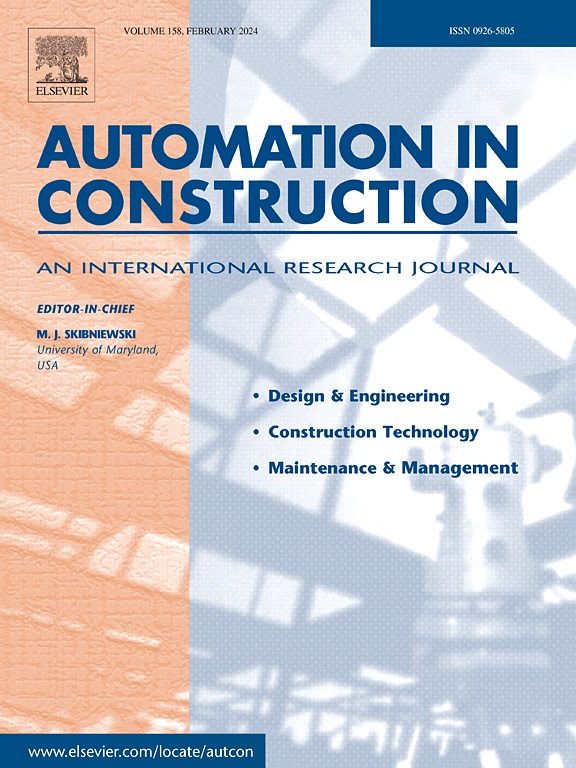AI-driven generative design and optimization in prefabricated construction
IF 11.5
1区 工程技术
Q1 CONSTRUCTION & BUILDING TECHNOLOGY
引用次数: 0
Abstract
Prefabricated construction (PC) is evolving through generative design and optimization (GD&O), integrating building information modeling (BIM) and artificial intelligence (AI). However, systematic reviews exploring their combined potential for improving efficiency and sustainability remain limited. This paper addresses this gap by reviewing 82 peer-reviewed publications from Web of Science and Scopus, employing PRISMA methodology alongside bibliometric and thematic analyses. The findings identify four key trends: (1) algorithmic optimization and decision-making, (2) BIM-driven design automation and parametric modeling, (3) sustainable design and cost-effective PC, and (4) industry trends and efficiency in PC. It also reveals twelve challenges, including algorithm complexity, data interoperability, and limited sustainability integration. Future directions include leveraging AI algorithms for building system optimization, advancing robotic process automation and human-robot collaboration, and utilizing digital twins for real-time decision support and predictive project management.

装配式建筑中人工智能驱动的生成设计与优化
预制建筑(PC)正在通过生成式设计和优化(GD&;O),整合建筑信息模型(BIM)和人工智能(AI)发展。然而,探索它们在提高效率和可持续性方面的综合潜力的系统审查仍然有限。本文通过回顾来自Web of Science和Scopus的82篇同行评议出版物,采用PRISMA方法以及文献计量学和专题分析来解决这一差距。研究结果确定了四个关键趋势:(1)算法优化和决策,(2)bim驱动的设计自动化和参数化建模,(3)可持续设计和成本效益PC,以及(4)PC的行业趋势和效率。它还揭示了12个挑战,包括算法复杂性、数据互操作性和有限的可持续性集成。未来的方向包括利用人工智能算法来构建系统优化,推进机器人过程自动化和人机协作,以及利用数字双胞胎进行实时决策支持和预测性项目管理。
本文章由计算机程序翻译,如有差异,请以英文原文为准。
求助全文
约1分钟内获得全文
求助全文
来源期刊

Automation in Construction
工程技术-工程:土木
CiteScore
19.20
自引率
16.50%
发文量
563
审稿时长
8.5 months
期刊介绍:
Automation in Construction is an international journal that focuses on publishing original research papers related to the use of Information Technologies in various aspects of the construction industry. The journal covers topics such as design, engineering, construction technologies, and the maintenance and management of constructed facilities.
The scope of Automation in Construction is extensive and covers all stages of the construction life cycle. This includes initial planning and design, construction of the facility, operation and maintenance, as well as the eventual dismantling and recycling of buildings and engineering structures.
 求助内容:
求助内容: 应助结果提醒方式:
应助结果提醒方式:


